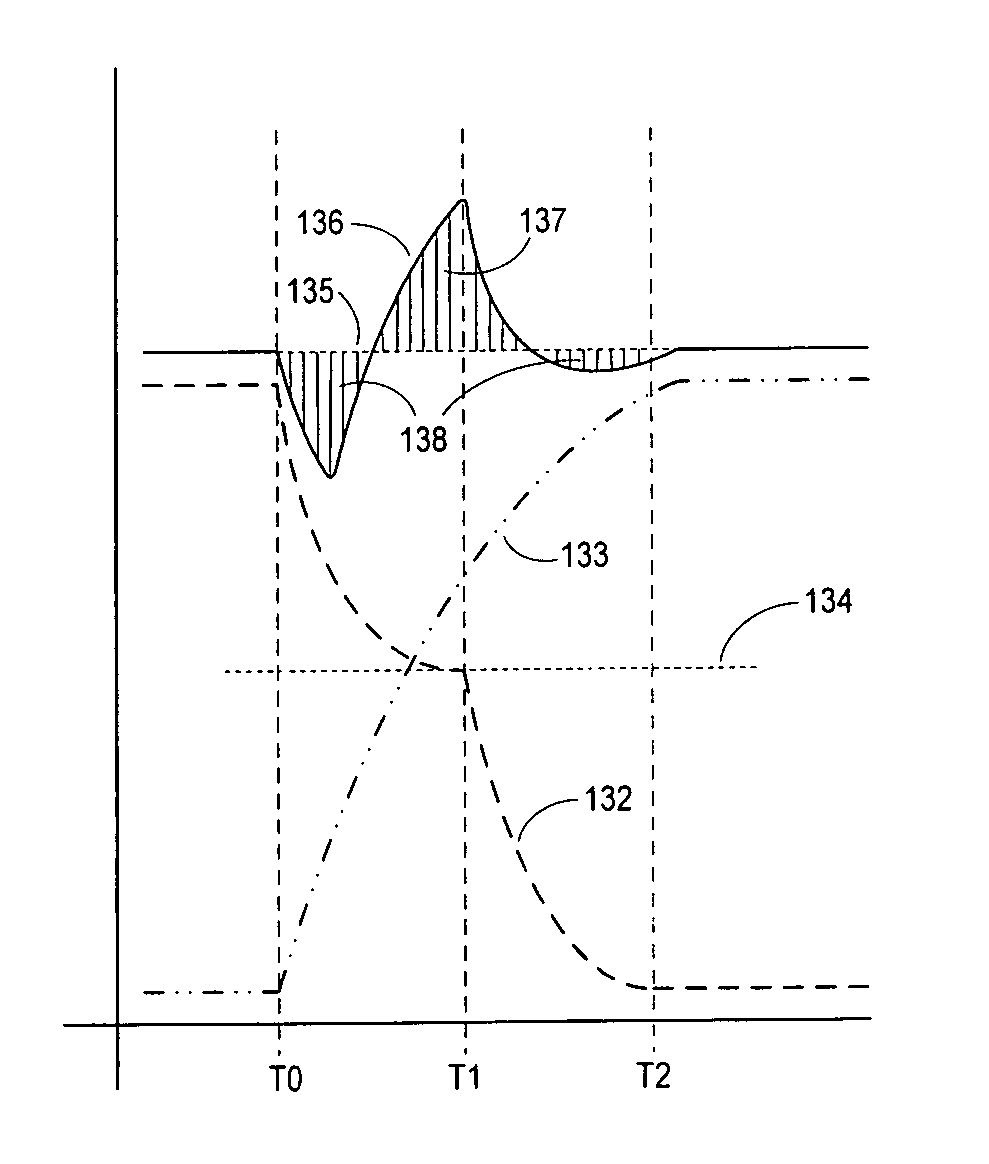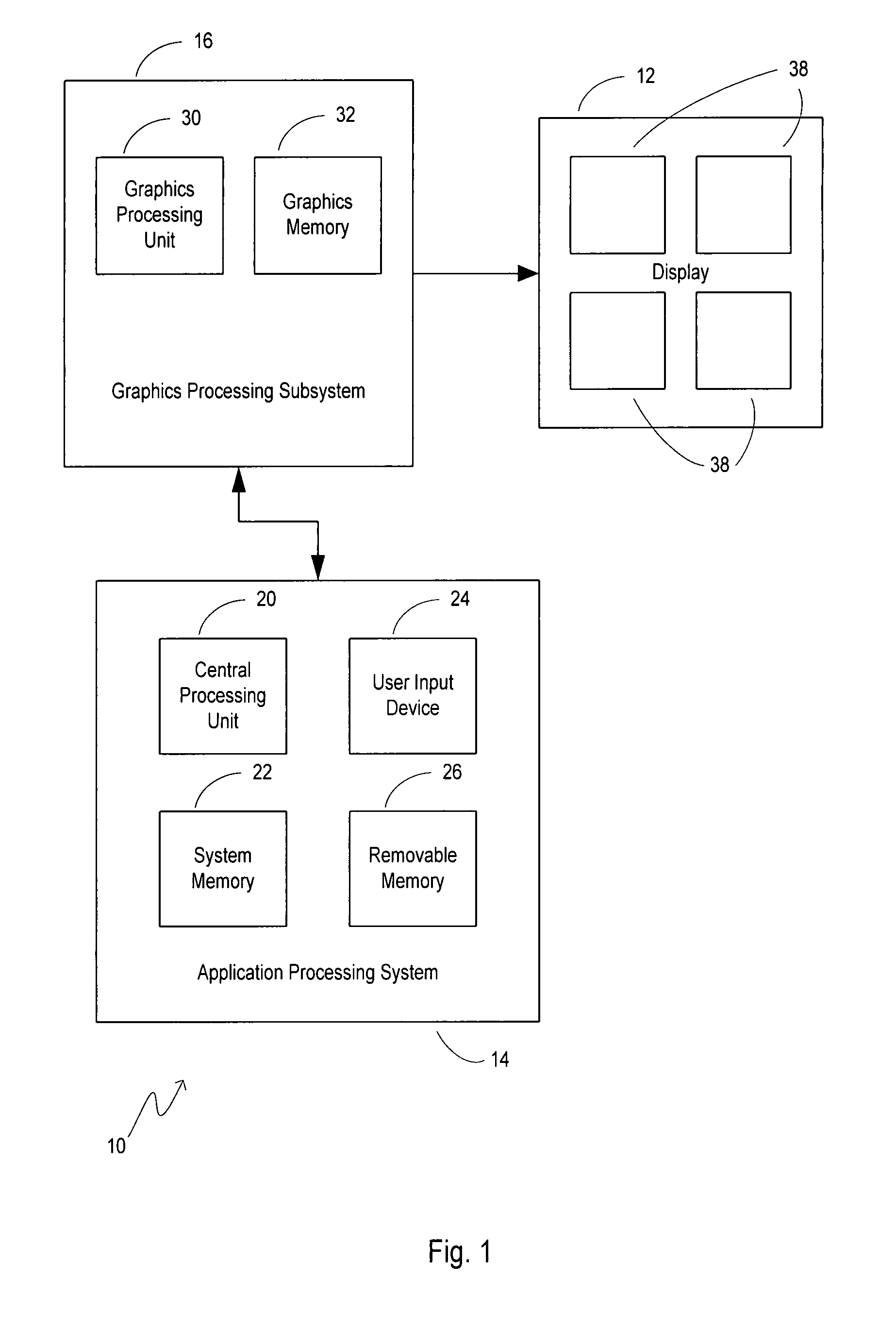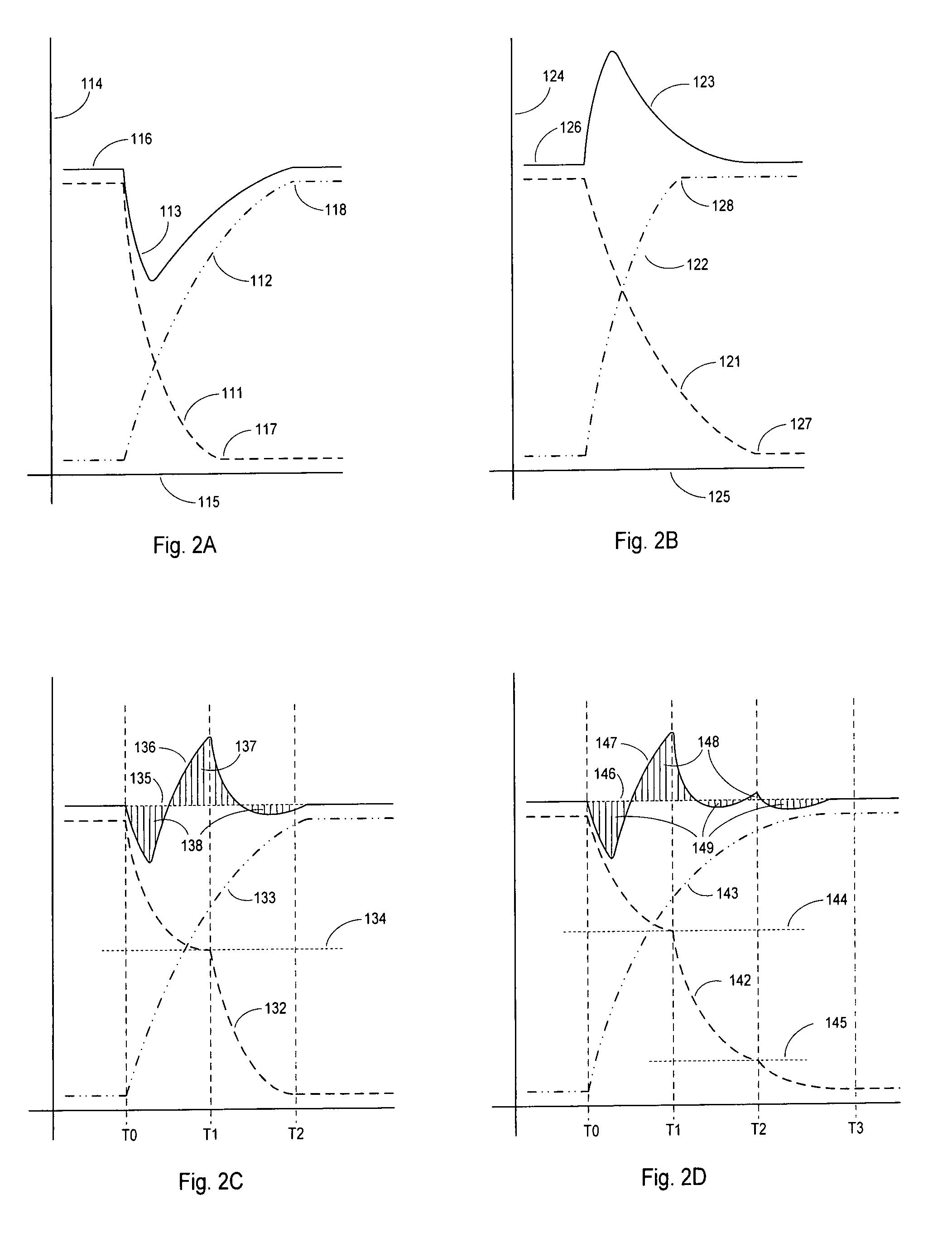Compensation for display device flicker
a display device and compensation technology, applied in the field of images, can solve the problems of significant flickering of the luminance flash or luminance jump the inability to adjust the brightness of the display device, so as to reduce the luminance flash, minimize the average luminance variation across the transition and display data frame, and maintain the effect of average luminan
- Summary
- Abstract
- Description
- Claims
- Application Information
AI Technical Summary
Benefits of technology
Problems solved by technology
Method used
Image
Examples
Embodiment Construction
[0040]The present invention shall generally be described with reference to FIGS. 1, 2A-2C, and 3A. Further, various embodiments of the present invention shall then be described with reference to FIGS. 1-4.
[0041]FIG. 1 shows a general block diagram of a system 10 for correction of flicker on a display device 12 thereof according to one or more embodiments of the present invention. In one embodiment, as shown in FIG. 1, the system 10 includes application processing system 14 associated with graphics processing subsystem 16 (e.g., generally coupled together via a system bus). Generally, the application processing system 14 and graphics processing subsystem 16 are functional to provide a plurality of sequential display data frames.
[0042]As shown in the embodiment of FIG. 1, the application processing system 14 includes a central processing unit (CPU) 20 and a system memory 22 communicating therewith. User input (e.g., selection of user selected parameters to control luminance according ...
PUM
 Login to View More
Login to View More Abstract
Description
Claims
Application Information
 Login to View More
Login to View More - R&D
- Intellectual Property
- Life Sciences
- Materials
- Tech Scout
- Unparalleled Data Quality
- Higher Quality Content
- 60% Fewer Hallucinations
Browse by: Latest US Patents, China's latest patents, Technical Efficacy Thesaurus, Application Domain, Technology Topic, Popular Technical Reports.
© 2025 PatSnap. All rights reserved.Legal|Privacy policy|Modern Slavery Act Transparency Statement|Sitemap|About US| Contact US: help@patsnap.com



